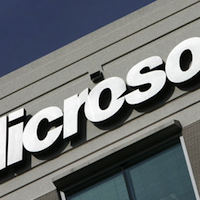
Microsoft rolls new BitLocker tool, remote booting with DaRT in MDOP 2011 R2
Microsoft on Monday rolled out R2 of Microsoft Desktop Optimization Pack 2011, the company's client-side management suite for Software Assurance subscribers which includes Asset Inventory Service (AIS) 2.0, Diagnostic and Recovery Toolkit (DaRT) 7.0 and Microsoft BitLocker Administration and Monitoring (MBAM).
The last major update to MDOP was in mid-March, and it included Microsoft Application Virtualization (App-V) 4.6 SP1, Microsoft Enterprise Desktop Virtualization (MED-V) 2.0, Advanced Group Policy Management (AGPM) 4.0, AIS 1.5, DaRT 6.5, and Microsoft Desktop Error Monitoring (DEM) 3.5.
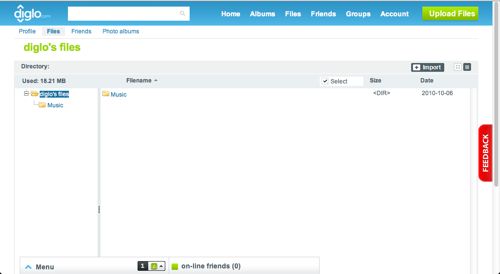
Diglo: the Google+ of file sharing
One of the biggest early draws to Google's new social network Google+ is the ability for users to break their list of friends into "circles" which each have their own level of communication. For example, if you want to post a message just for your old college buddies and not your co-workers, you can select the appropriate group and share that content without having to worry about the wrong people being involved in the conversation.
Diglo, a social network specifically aimed at file sharers, takes the same approach to uploading and downloading content. Rather than just being a web-based locker like RapidShare or Megaupload, Diglo lets users set up a profile that can have as little or as much personal information as they like, and then they can begin sharing files with as many or as few people as they choose.

The Final days of Flash: Adobe releases public preview of Edge HTML5 editor
Adobe on Monday rolled out the first public preview of Adobe Edge, the company's HTML5 design tool that makes the creation of HTML5 graphics and animations feel like editing a movie.
In the Spring of 2010, the "Flash vs. HTML5" debate went into full battle mode when Apple CEO Steve Jobs published a letter called "Thoughts on Flash," where he said Adobe's Flash platform was a relic of the PC era, and that in the Post-PC era, different tools and standards needed to be used.
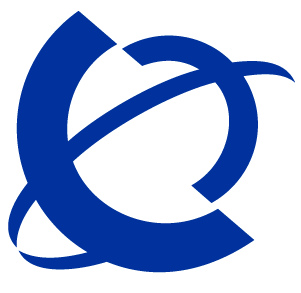
Nortel completes patent liquidation to Apple, Microsoft, RIM, Sony: now what?
Bankrupt Canadian telecommunications company Nortel Networks Corp. announced on Friday that it has completed the sale of its 6,000 patents for $4.5 billion to the consortium of Apple, EMC, Ericsson, Microsoft, Research in Motion, and Sony. The consortium won the auction for Nortel's patents on July first.
Immediately following the closure of the auction, Research in Motion announced it had contributed $770 million to the bid, and Ericsson announced it had contributed $340 million, for a combined 1.11 billion. According to a recent 10-Q filing with the Securities and Exchange commission, Apple had the majority stake in the bid, throwing in $2.6 billion, leaving the remaining $800 million to be split between Microsoft, Sony, and EMC.

Capitol communications systems crushed under debt ceiling debate
As the US Congress heads down the final stretch before August 2nd, the date colloquially known as "#debtocalypse," or the point at which the United States could lose its capacity to borrow any more money, the Capitol's telephone and computer systems are strained from all of the incoming messages from the public.
On Tuesday, after President Obama urged voters to call or email their representatives in Congress to support a debt ceiling compromise, House telephone lines were flooded with calls.

BlackBerry Messenger 6 launches, integrates live presence, chat into apps
Feeling the heat from both Android and iOS in the global smartphone market share battle, Research in Motion on Thursday announced the availability of BlackBerry Messenger 6 (BBM 6) the latest version of the smartphone maker's trademark instant messaging application which integrates BBM functionality into other BlackBerry apps for a boost in social usability.
With the debut of the BBM Social Platform SDK earlier this year, BlackBerry app developers got the ability to embed BBM functionality into their apps. The platform is extremely promising, as it could put real time communication into any application. Users could, for example, see that one of their contacts is available to play games, and an invitation could be sent. Then, once the game has begun, users could have a live in-game BBM chat session.
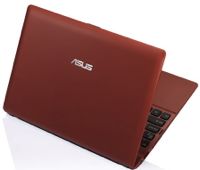
Asus semi-officially reveals ultrathin MeeGo netbook
At Computex 2011 in Taipei last month, there was a significant amount of movement stirring in the MeeGo camp. The fully open source mobile operating system from Intel was being shown off on An Acer Iconia tablet, as well as on notebooks from PC makers Lenovo, Samsung, and Asus.
Earlier in July, an FCC filing from Taiwanese PC maker and netbook pioneer Asus showed that its MeeGo-powered X101 could possibly be coming to the United States
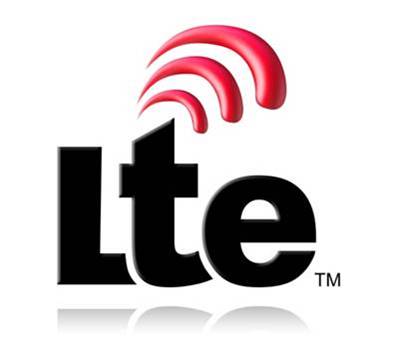
With AT&T/T-Mobile merger still possible, Sprint teams up with LightSquared
Sprint & LightSquared on Thursday announced a 15-year agreement to share the responsibility and profits of the LightSquared wholesale 4G LTE network.
Number 3 US wireless network carrier Sprint has repeatedly spoken out against the possible merger of AT&T and T-Mobile USA, saying it would cause the wireless industry to "regress inexorably toward a 1980's-style duopoly."

Qualcomm rolls out Augmented Reality dev kit for iOS
A full year after Qualcomm debuted its Augmented Reality (AR) platform for Android, the chipmaker has released an AR software development kit for Apple's iOS.
iOS developers can now freely download Qualcomm's QCAR SDK, and then use Apple's XCode IDE and the Unity3 3d engine to build 3D augmented reality apps for iOS. The QCAR SDK supports iOS4 and iOS5 on the iPhone4, iPad2, and 4th generation iPod touch.
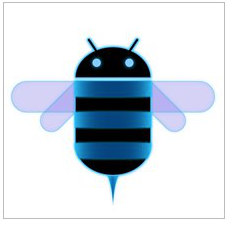
7 inch Android tablets will get Honeycomb, thanks to new layout system in 3.2
Since 2009, Android supported three general screen size categories: small, medium, and large. But the introduction of tablet-specific Android Honeycomb in early 2011 brought support for the extra large screen size category and drove a wedge between Android phones and Android tablets.
You see, Honeycomb was created to specifically take advantage of the increased screen real estate of tablets, and the "extra large" screen category was born. But tablets with 7" screens like the original Samsung Galaxy Tab, the Dell Streak 7, and the Archos Home Tablet have awkward screen dimensions which make them fit into the "large" category, but really only when viewed in the landscape orientation. Because of this strange screen quality, 7" tablets didn't even support the version of Android built for tablets.
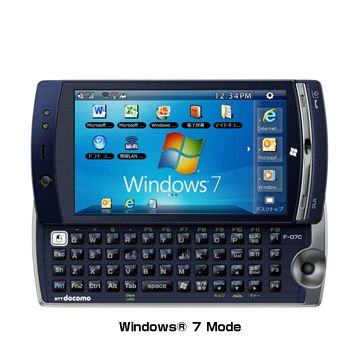
Why wait for Mango when you can get the first Windows 7 phone?
Back in May, when Microsoft announced "Mango," the first major update to Windows Phone, the Redmond company named some new hardware partners who would launch devices running Windows Phone Mango: Acer, Fujitsu-Toshiba, ZTE, and Nokia. So far, Nokia's "Sea Ray" Windows Phone Mango device has been shown, and Acer's W4 was shown off at Computex in Taipei. Tuesday evening, Fujitsu Toshiba Mobile Communications officially announced its Windows Phone Mango device, known as IS12T.
IS12T includes some impressive capabilities, including a waterproof and dustproof chassis, a 13.2 megapixel camera, and 32GB of onboard memory, and will be available in Japan beginning in September 2011. Global availability and further specs have not yet been announced.

Andover, Mass. has fastest data in U.S., Pocatello, Idaho, slowest
With over 35 million users accessing its Content Delivery network worldwide, Pando Networks has access to tons of data about the movement of different types of files across the Web. Wednesday, the company released the results of a six-month real world study of traffic on its network within the United States, showing which areas have the fastest speeds and highest completion rate of file transfer.
Unlike the NTIA's National Broadband Map, this study relies on actual performance data and not just advertised maximum speeds, so it is interesting to see that Rhode Island, which NTIA ranks as the 5th fastest state in advertised speed is the fastest in actual speed, with the average of 894 kBps (or 7.1 Mbps).

'Next-gen' HTML5 app LucidChart raises a million in funding
LucidChart is a fantastic example of how an HTML5 Web app can offer functionality comparable to a desktop application on any platform with an appropriate browser, and not even require a full-time connection to work. After having become the most popular paid app in the Chrome app store, and then launching full offline functionality at Google I/O this year, LucidChart on Tuesday announced it has raised a million dollars in seed funding from 500 Startups, 2M Companies, K9 Ventures, and other unnamed angel investors.
LucidChart was crafted in late 2009 to be the pure Web app version of Microsoft Visio, where multiple users can render and manipulate graphical charts in the Web browser in real time. It even has support for Visio .vdx documents.

Apps on the TV: still a pipe dream
Since the advent of the mobile app store, consumer electronics companies have been trying to port that same app-using experience over to the television screen, with notable attempts being made by search engines Yahoo and Google with Yahoo Widgets and Google TV. According to recent figures by market research company In-Stat, a vibrant TV-based app environment is still just a pipe dream.
In-Stat, now a subsidiary of NPD Group, has published its second-quarter view of the digital entertainment ecosystem, and the app model is a very long way from being mainstream among TV viewers.

ZocDoc, the 'OpenTable of doctor's appointments,' comes to Android
ZocDoc, a web-based service for finding doctors and booking appointments without making a single phone call, launched its official Android app on Monday, and it is freely available for download in the Android Market.
ZocDoc is frequently compared to restaurant reservation service OpenTable because, well, it's really the same thing, but instead of booking dinners, the user is booking medical or dental appointments.

